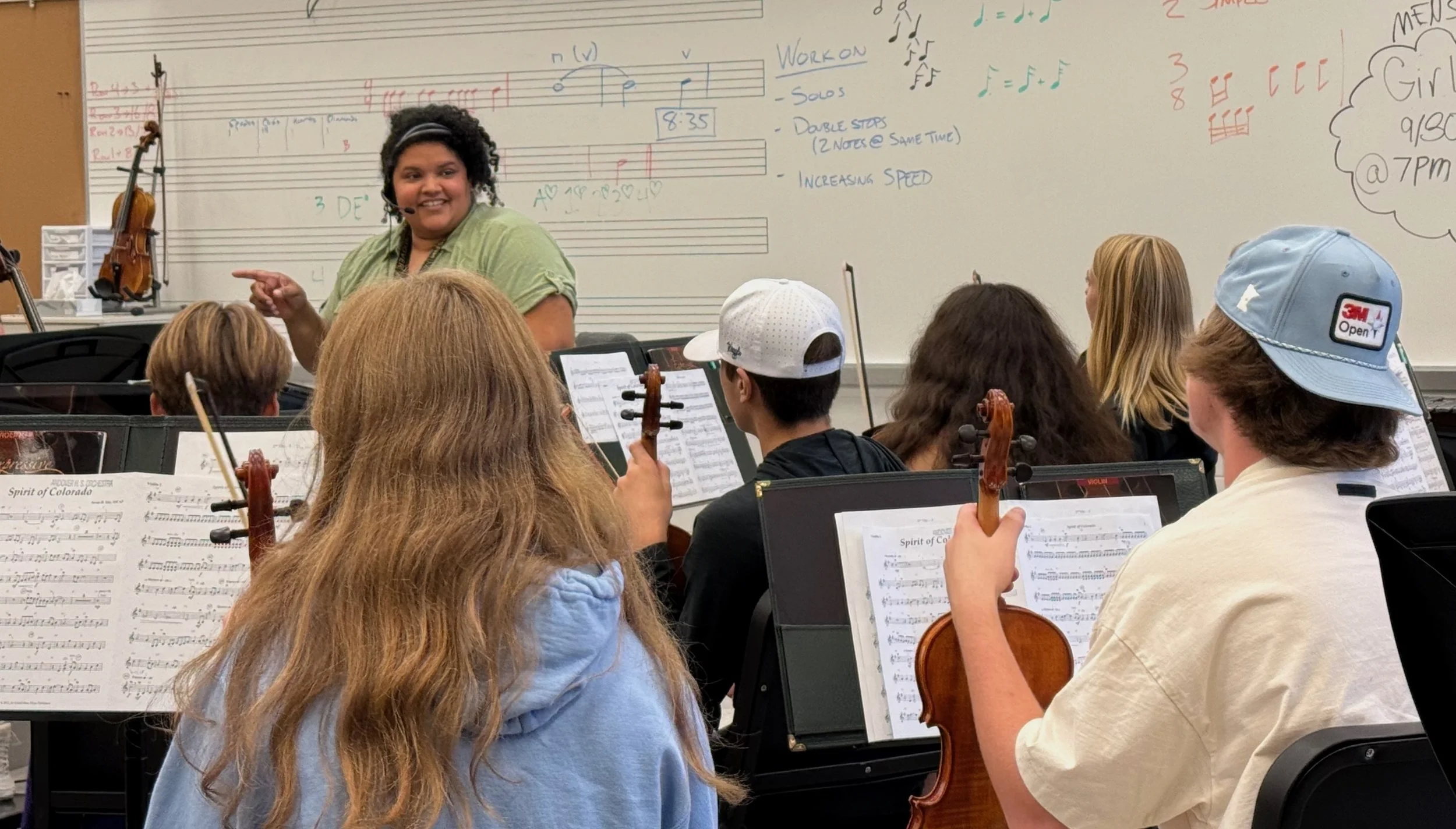Successfully shifting students’ attention in a world of distractions
IMAGE: Teacher smiling while shifting students’ attention.
The world is full of distractions. Schools, the place where students need to focus their attention regularly to be successful, are rife with opportunities for increased stimulation and distraction. Fans, bells, conversations, chrome books, and lots and lots of people talking and moving from place to place are all examples.
Each year it seems as though students have shorter and shorter attention spans, which increases the number of times educators have to shift the attention of students back to the instruction. Such repetition causes educator frustration and can lead to a reliance on verbal cueing and redirection. While verbal redirection feels like it will be an effective shortcut to regaining attention, it mostly serves to raise frustration levels even higher:
“I’m waiting”
“I like how ____ and ____ are ready”
“Phones away”
“I shouldn’t hear any voices right now”
“Check your bodies”
While researchers have been studying attention for years, with varying conclusions on the length of an average attention span, they agree on what veteran educators intuitively know. Our capacity for focused attention is decreasing. A recent study on collective attention backs this up.
However, it’s not just the students who have shorter attention spans and increased distractability; we all do. Imagine yourself in the waiting room of your dentist office. You’ve been waiting longer than usual, so you take out your phone to double check the time of your appointment. Without even thinking about it, you move from your calendar to another app. Tik Tok is calling.
Because the algorithm knows you well, your feed brings up a bright-eyed teacher with the solution for classroom management: a wireless doorbell! Easy to install, and anytime I need my students’ attention, I just hit the button. No need to use my voice.
Before the hygienist calls you back for your cleaning, one of those doorbells is on the way to your house. You feel a sense of excitement and satisfaction. All of your Getting Noticed problems are about to be over.
Except…maybe not.
The Tik Tok doorbell is certainly a creative idea to help students know it’s time to shift their attention to the teacher. The doorbell could function as the Get Noticed skill in the Getting Attention context. In order to get noticed, the thing you do and/or say must be brief, clear, and obvious.
The doorbell could work. It’s also possible, however, that it won’t always fit all of those criteria. Here’s why:
Reason 1: Depending on the activity in the room, the decibel level of the doorbell might blend in with the environmental noise and not be obvious enough for you to get noticed. In that situation, you need something louder/brighter/bigger than what your students are doing.
Reason 2: Even if the environment in your classroom is consistently quiet, the brain’s Reticular Activating System (RAS) works on a subconscious level to tell your brain what to attend to and what to ignore. Sudden loud bang? Attend! It could be a threat! Loud sounds in a gymnasium as a basketball game is being played? For most neurotypical brains, the RAS tunes out such sounds, and they become background noise. The world would be an overwhelming place if your brain attended to every stimulation the world provides.
Over time, the RAS tunes predictable stimulation out. In other words, if you only ever use a doorbell to Get Noticed, over time, your students’ brains will eventually tune it out.
So what’s the solution?
Shifting students’ attention is complex. While all five of the Foundational Skills for Getting Attention work together to help solve this problem, when you Get Set, give yourself a moment to be strategic. Figuring out what is needed for each situation based on immediate circumstances increases your likelihood of success. While you are Getting Set, take a moment to consider:
Where is your students’ focus now?
Is anyone dysregulated and in need of immediate support?
What will you be competing with when you say or do something to get them to notice you?
What will you say or do that is brief, clear, and obvious in order to Get Noticed? Variety is key. The RAS is a sucker for novelty.
When is the best timing to say or do something to increase the likelihood of them noticing you?
Foundational Skill Spotlight
Get Set is one of the Foundational Skills that is used in the context of getting/shifting students’ attention. What are some things you want to be even more aware of in yourself when you’re implementing with students?


